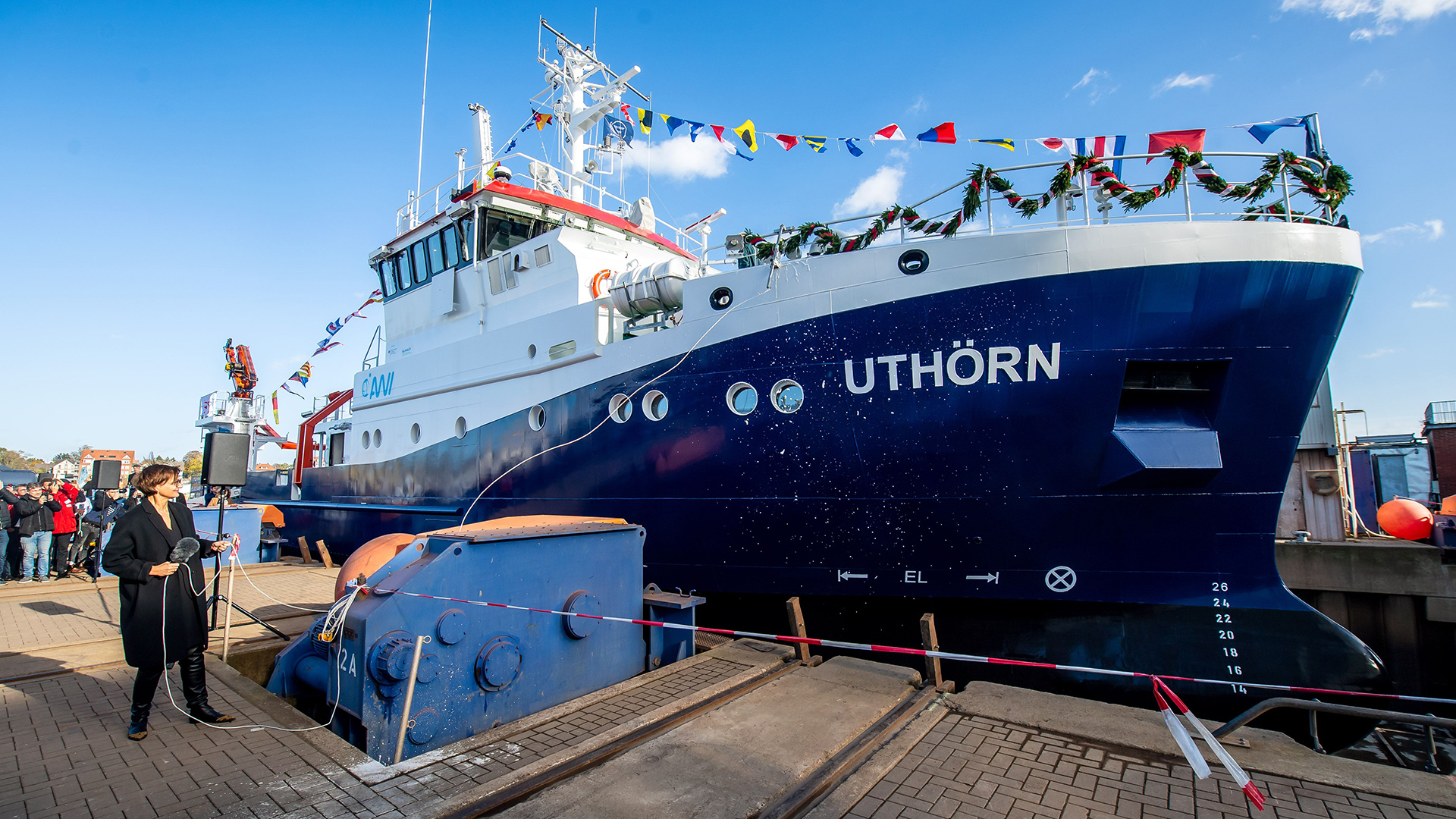Status: 01/11/2022 4:55 PM
You must explore the North Sea – and be climate-neutral on the way. Research Minister Stark-Watzinger named “Uthörn” in Bremerhaven. The research vessel is the first of its kind to run on green methanol.
Scientists at the Bremerhaven Alfred Wegener Institute (AWI) will receive a new environmentally friendly research vessel. Federal Research Minister Bettina Stark Watzinger baptized “Uthörn” in Bern, Lower Saxony. The new 35-meter building, which costs around 15 million euros, is the first German cruising ship to be fitted with a particularly low-emissions methanol engine. Methanol should be “green”, that is, obtained with the help of renewable energies.
Sustainable exploration of the North Sea
“As a fuel, methanol has so far been an experiment,” Stark-Fitzinger said. “That is why today it is an important step on the road to shipping cleanup.” So AWI Director Antje Boetius spoke of “a milestone towards a sustainable marine research infrastructure”.
According to the AWI, “Uthörn” also saves energy when heating and cooling. A water-to-water heat pump is used on board a ship for the first time. It requires only one-fifth of the energy that a conventional boiler uses.
The researchers want to use ‘Uthörn’ to travel across the North Sea and investigate how the sea has changed. In doing so, they repeatedly record the physical, chemical and biological state of the sea at the same points. According to the AWI, this is how a series of valuable measurements is generated, which researchers can use to detect even the smallest changes in the environment. In addition to a large work surface with dry and wet labs, the ship also has two booms for trawls and shovels, a multi-frequency fishing echo device for detecting and identifying shoals of fish.
Investigating the effects of climate change
“We can do research on wind farms or survey the sea floor,” said Karen Wiltshire, AWI’s deputy director for the multifunctional vessel. With the help of the cutter, one would find out, for example, whether the German Bight recovered from the input of pollutants in the 1970s and 1980s, according to Wiltshire. It will also be seen whether the damaged sea floor is regenerating, and the effects of climate change will also be examined. “Uthörn,” named after a small island off Sylt, is used to train marine biologists.
According to the AWI, the “Uthörn” is powered by two electric traction motors. Power for this is provided by two combustion engines that are powered by methanol instead of marine diesel. Soot particles did not get into the air – unlike the combustion of gasoline, diesel and heavy oil. Since methanol has only about half the energy density of diesel, the “Uthörn” is equipped with much larger tanks than its predecessor. However, purely electric propulsion would have required huge batteries weighing tens of tons – which would have made the ship twice as large.
Hydrogen is obtained using wind energy
It is not yet clear where the green methanol will come from to power the ship. Henning Westphal of Laeisz said shipping company Laeisz, which operates the vessel on behalf of AWI, is currently in talks with two potential suppliers. AWI, the Helmholtz Center for Polar and Marine Research, also plans to build a pilot plant to produce green methanol in Bremerhaven. This means that in the future, partially sustainable fuels can be produced on our doorstep.
Green methanol, a semi-carbon neutral fuel, is produced when the energy needed to produce it comes from renewable sources. For this purpose, hydrogen is produced with the help of wind energy, which reacts with carbon dioxide to form methanol. Carbon dioxide can come from a wastewater treatment plant, for example.
According to AWI, the previous vessel, “Uthörn”, consumed an average of 76 tons of diesel oil annually. This corresponds to carbon dioxide emissions of about 243 tons. For comparison: each German produces an average of 11 tons of carbon dioxide. After two years of construction, the new ship is scheduled to be delivered to marine researchers in December.

“Certified tv guru. Reader. Professional writer. Avid introvert. Extreme pop culture buff.”







More Stories
Samsung Quantum Dot TV: Art meets technology
Pitch: €56m for energy startup Reverion
Plastoplan: Plastics for Energy Transition